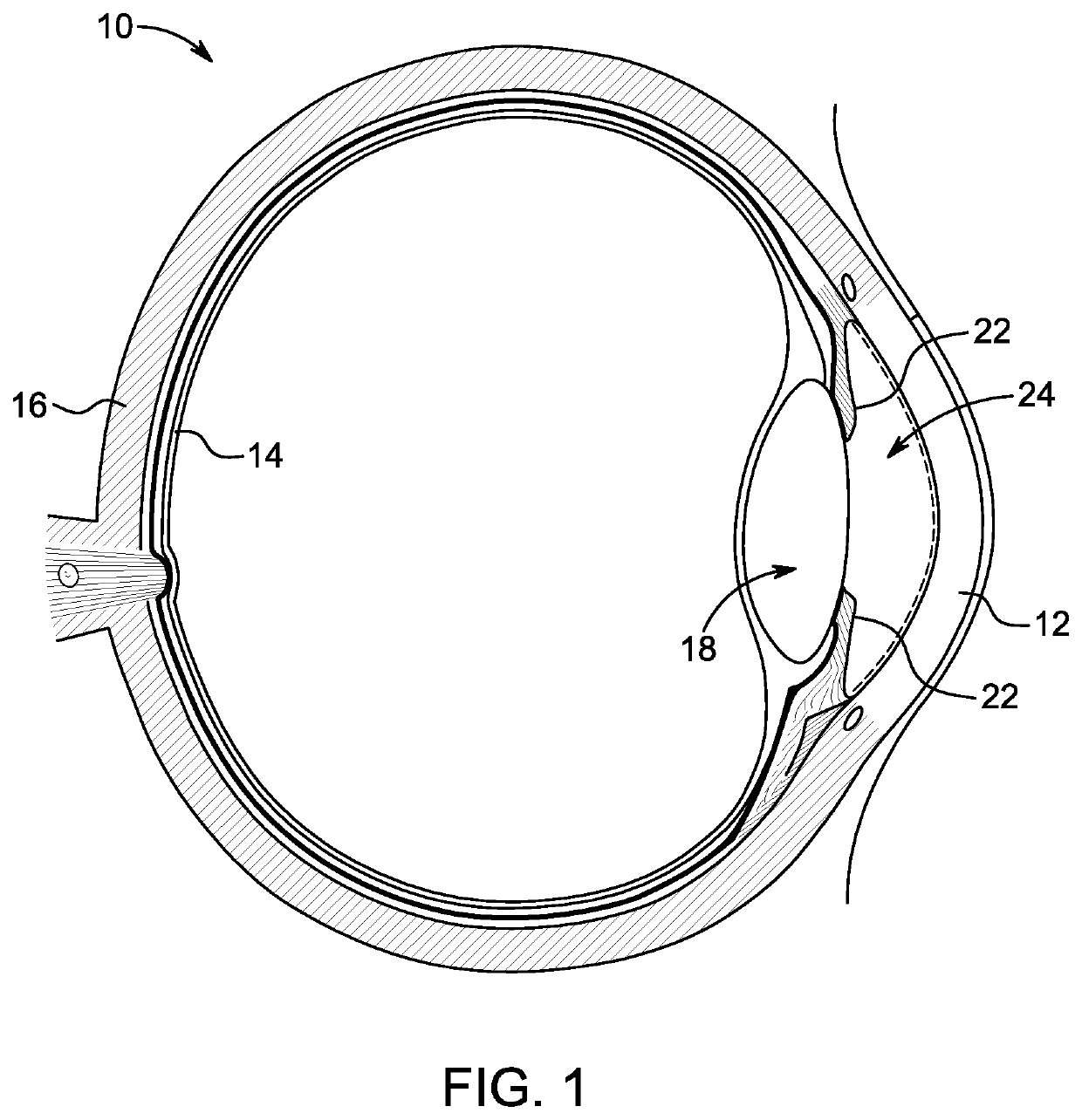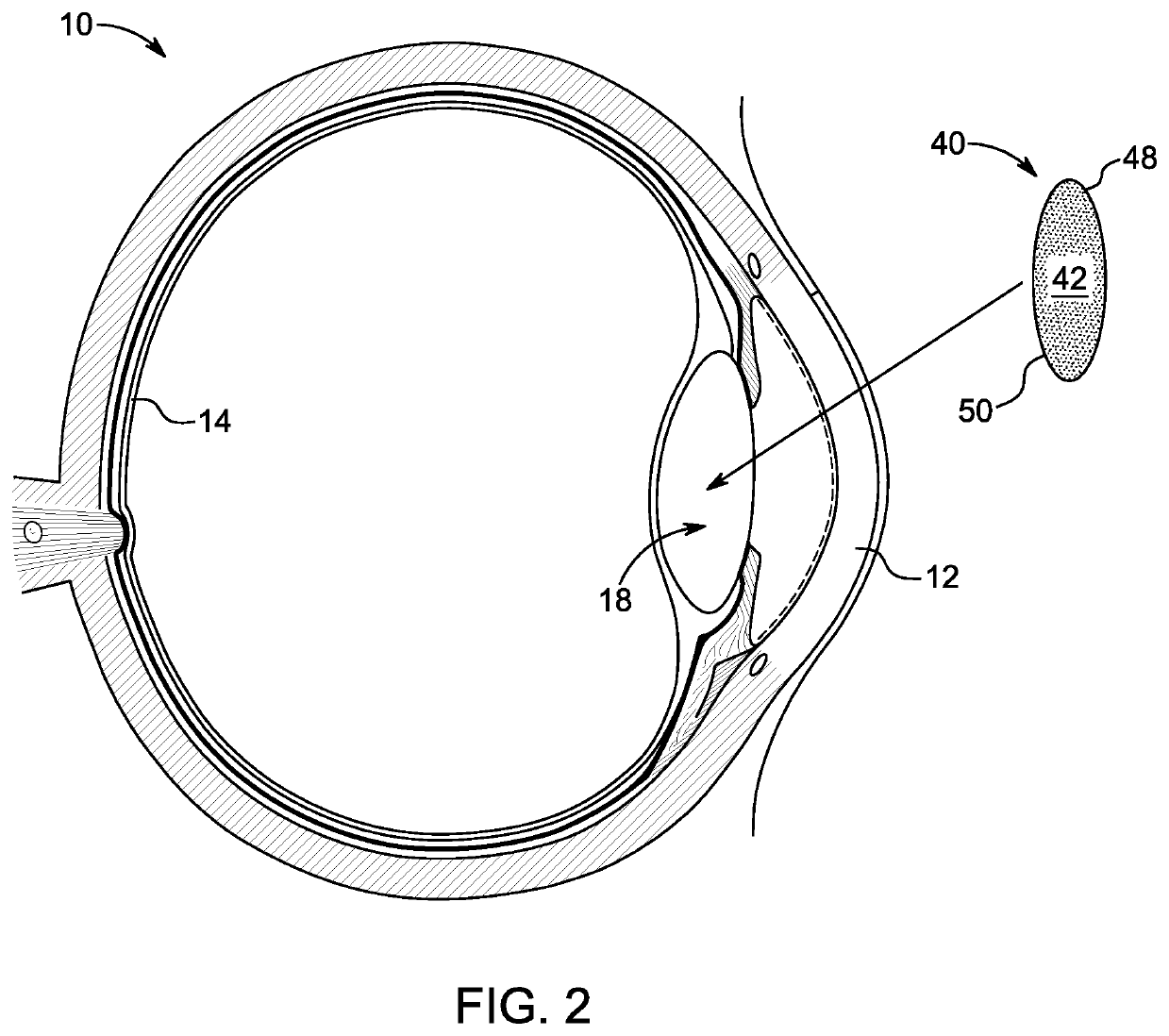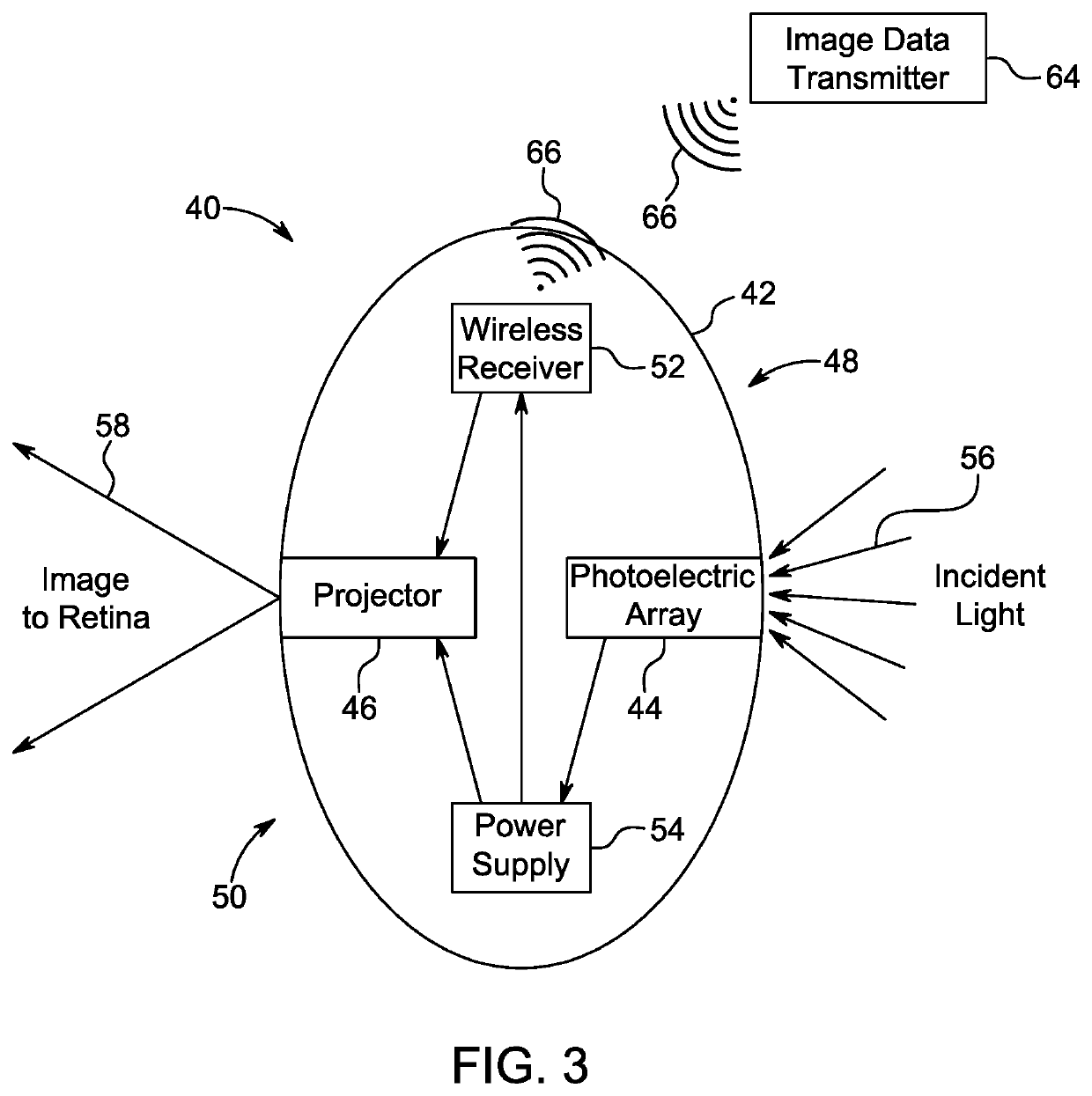Artificial vision intraocular implant device
a technology of artificial vision and intraocular lens, which is applied in the field of ophthalmologic devices, can solve the problems of insufficient restoration or enhancement of inability of light to pass through the eye to the retina, and inability to properly restore the vision of patients with corneal conditions
- Summary
- Abstract
- Description
- Claims
- Application Information
AI Technical Summary
Benefits of technology
Problems solved by technology
Method used
Image
Examples
first embodiment
[0065]Referring to FIG. 8a, a first embodiment divides the photoelectric collector array 44 into individual picture elements (pixels). Many digital cameras 64b use color filters in conjunction with each picture element to filter certain wavelengths of light out. Each picture element has an overlay of color filters, typically red, green, and blue, thus, when incident light 56 enters the apparatus, each picture element is able to measure the amount of light 56 entering in the red spectrum, the green spectrum, and the blue spectrum. In the power harnessing camera, a power aggregation layer may be positioned posterior each picture element or color energy measurement layer. The photoelectric element under each color filter may be optimized for the color or frequency of light for which the corresponding color filter is configured to measure, thus capturing the light energy that is activating the picture elements.
second embodiment
[0066]Referring to FIG. 8b, a second embodiment uses a similar system of capturing the chrominance by utilizing individual picture elements, however, color filters are substituted by prism 110 which separates the light into a spectrum. The subdivided light energy components (red, green, and blue) can be measured to determine the picture elements chrominance for each image cycle while all of the light energy can be harnessed by the photoelectric array positioned behind the prism. Thus, instead of filtering which reduces the total light and frequencies being received by each element of the photoelectric array, the full spectrum of incident light 56 may be collected.
third embodiment
[0067]Referring to FIG. 9, a third embodiment may utilize multilayer (multi-junction) photoelectric cells 120. The multi-junction photoelectric device may comprise layers of stacked photoelectric p-n junctions wherein each junction is receptive to a specific bandwidth of light frequencies and permits other bandwidths of light to pass through. A first layer comprises an incident light surface 124. An incident light surface 124 is selected to allow photons which have an energy level below a first specified frequency to pass through the incident light surface but captures photons having an energy level above the first specified frequency. A second layer 126, positioned below the incident light surface is selected to allow photons which have a second energy level below a second specified frequency to pass through the second layer, wherein the layer captures photons at a frequency between the first specified frequency and the second specified frequency. In this manner, a plurality of lay...
PUM
 Login to View More
Login to View More Abstract
Description
Claims
Application Information
 Login to View More
Login to View More - R&D
- Intellectual Property
- Life Sciences
- Materials
- Tech Scout
- Unparalleled Data Quality
- Higher Quality Content
- 60% Fewer Hallucinations
Browse by: Latest US Patents, China's latest patents, Technical Efficacy Thesaurus, Application Domain, Technology Topic, Popular Technical Reports.
© 2025 PatSnap. All rights reserved.Legal|Privacy policy|Modern Slavery Act Transparency Statement|Sitemap|About US| Contact US: help@patsnap.com



